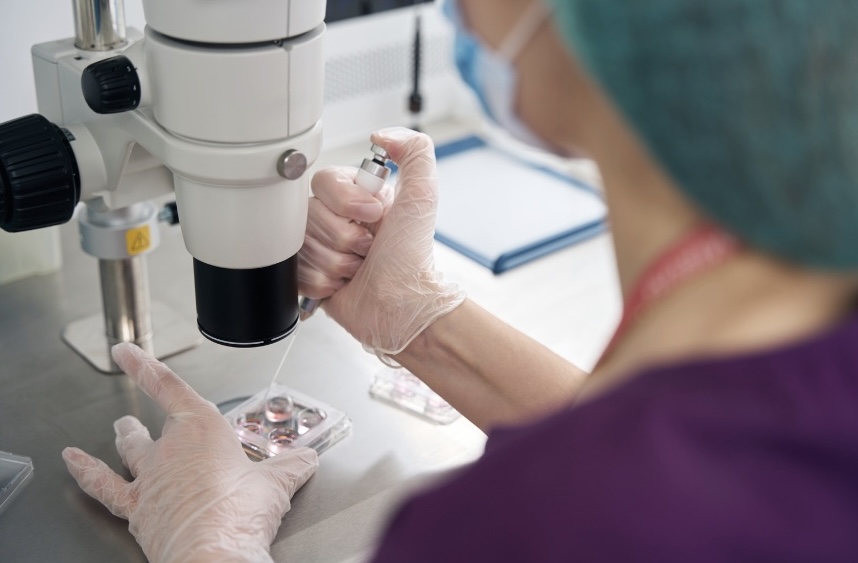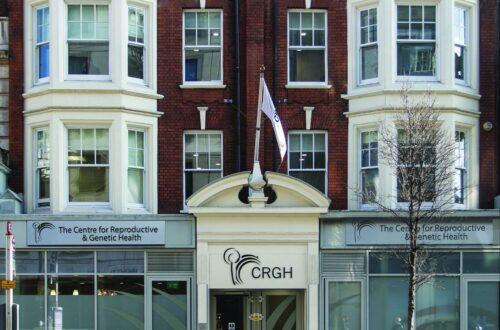
The Science Behind Creating Embryos
By Eloise Burt, Senior Clinical Embryologist
At Lister Fertility Clinic at The Portland Hospital, our goal is to provide every patient with the best possible chance of success, and that journey begins on what we call “Day 0″—the day we combine eggs and sperm to create embryos. For many same-sex couples and individuals using donor eggs or sperm, this is an exciting and emotional part of the fertility process, filled with hope and anticipation.
The eggs and sperm we use can be freshly collected on this day or thawed from previously frozen samples. No matter the source, we carefully prepare the sperm to select the best quality for use in treatment. This process helps maximise the chances of successful fertilisation and healthy embryo development.
IVF vs. ICSI: Two Paths to Creating Embryos
There are two primary methods we use to combine eggs and sperm: IVF and ICSI. With IVF, the sperm are added to a dish containing the eggs, and we let them do what nature intended—allowing the sperm to find and fertilise the eggs on their own. ICSI (Intracytoplasmic Sperm Injection), however, takes a more direct approach. Here, the embryologist selects a single sperm and injects it directly into each egg.
The choice between IVF and ICSI depends on factors like sperm quality and whether the eggs are fresh or frozen. For example, if frozen eggs are being used, we typically perform ICSI because the freezing process hardens the egg’s outer shell, making it more challenging for the sperm to penetrate on its own. Similarly, if the sperm sample has any reduced parameters, such as low count or motility, ICSI may be the best option to ensure successful fertilisation. Ultimately, we consider all factors to determine the most suitable treatment for each individual or couple.
Monitoring Embryo Development with Care
Once fertilisation occurs, we place the embryos in a time-lapse incubator that takes regular photos to track their development. This technology allows us to monitor the embryos closely without disturbing their environment, ensuring they remain in optimal conditions throughout their time in the lab. Over the next five to six days, we assess the embryos to determine when they are ready for transfer or freezing.
For same-sex couples or individuals using surrogacy or planning to grow their family over time, freezing embryos can be an essential part of the process. This ensures that embryos not used immediately are preserved at their best stage of development for future use.
The Freezing Process: Preserving Potential
When it comes to freezing, we use a method called vitrification, which involves passing the embryos through cryoprotectant solutions to prevent damage from ice crystal formation. The embryos are then rapidly cooled and stored in liquid nitrogen, where they enter a ‘glass-like’ state. This process halts any cellular activity, preserving the embryos in their most optimal state for as long as they are stored.
Whether it’s eggs, sperm, or embryos, they can be stored in liquid nitrogen indefinitely without any impact on their quality. For same-sex couples or single parents considering fertility preservation, knowing that these precious cells remain viable for years to come offers both reassurance and flexibility as you plan your family.
Caring for Yourself During the Process
Your journey is unique, and at Lister Fertility Clinic at The Portland Hospital, we are here to provide you with the care, expertise, and compassion needed to make it a positive experience. Whether you are considering surrogacy, using donor eggs or sperm, or exploring fertility preservation, our goal is to help you feel confident, informed, and supported as you move forward toward creating your family.





